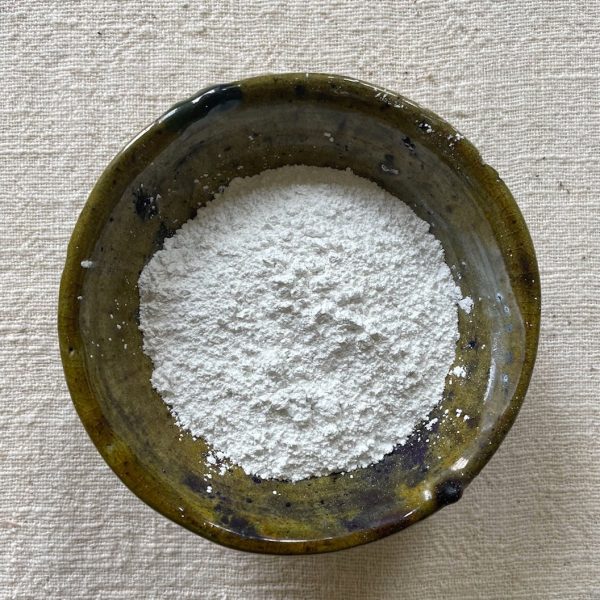
For rubber, calcium carbonate is the third largest inorganic filler after carbon black and white carbon black. It has a certain reinforcing effect in natural rubber and synthetic rubber. It can not only improve or strengthen the tensile strength and wear resistance of rubber vulcanizates, improve tear strength, but also adjust the Mooney viscosity of the mixed rubber, increase plasticity, facilitate molding, make the product size more stable, and reduce production costs.
At present, the common calcium carbonate products on the market mainly include light calcium carbonate, heavy calcium carbonate, activated calcium carbonate, nano calcium carbonate, calcium carbonate whiskers, etc. Its usage accounts for about 1/4 of the total usage of inorganic non-metallic fillers in rubber products at present, and can be used in various rubber products, with an addition ratio of 10-80%.
1. Light calcium carbonate
Light calcium carbonate has a semi-reinforcing effect in rubber, can improve the mechanical properties of rubber, is easy to disperse, and does not affect the vulcanization speed. It is used to manufacture hoses, tapes, rubber sheets, rubber cloth products, rubber shoes and medical products. It is used in natural rubber and styrene-butadiene rubber, with a dosage of up to 140 parts, in natural rubber hot water bag glue, the dosage is up to 75 parts, and in chloroprene rubber printing rollers, the dosage is 20 parts.
2. Active light calcium carbonate
Active calcium carbonate after surface modification has a reinforcing effect in rubber, and its reinforcing performance is comparable to that of white carbon black. It is often used as a reinforcing agent for white, light-colored and colored rubber products. It is easy to disperse in the rubber compound, but it generates a lot of heat, and the vulcanization speed will be accelerated after activation. It is used to make tire buffer rubber, inner tubes, bicycle inner and outer tubes, transmission belt covering rubber, hoses, rubber cloth products and rubber shoes. It is suitable for natural rubber, SBS and latex. It has a significant reinforcing effect in SBS and has good coloring performance.
3. Heavy calcium carbonate
Heavy calcium carbonate has no reinforcing effect in rubber, but plays a filling and volume-increasing role in natural rubber, synthetic rubber and latex, which can make the rubber firm and easy to disperse in the rubber. It can also be used as an isolating agent or demoulding agent. Those with a whiteness higher than 90% can also be used as a whitening agent. It can be used to make hoses, tapes, rubber shoes, tape products, molded products, extruded products and foamed products. It can be used in natural rubber and nitrile rubber hoses in an amount of up to 80 parts; in natural rubber and butyl rubber tapes, the amount can be up to 50 parts; in natural rubber insulating tapes, the amount can be up to 200 parts or more.
4. Nano calcium carbonate
Nano calcium carbonate is a fine product among calcium carbonates and also the cheapest nanomaterial. Its special quantum size effect, small size effect, surface effect, etc. make it have obvious advantages over conventional powder materials in terms of reinforcement, transparency, dispersibility, thixotropy, etc., and the microscopic combination with other materials also changes, thus causing changes in the macroscopic properties of the rubber.
Particle size: cubic nano calcium carbonate is preferably 80~120nm. The finer the particles are, the larger the specific surface area of mutual wetting with rubber is, which makes it more and more difficult to disperse calcium carbonate particles, especially below 80nm. Due to the increase in surface energy, it is easy to generate heat and cause sticking during rubber mixing.
The short diameter of chain-shaped nano calcium carbonate is preferably between 10~30nm, but good surface modification and dispersion treatment must be carried out to improve its application effect.
Surface treatment: Choose a suitable dispersant to improve the blending and dispersion effect.
Oil absorption value: The higher the oil absorption value of nano calcium carbonate for rubber, the better the wettability and reinforcement of calcium carbonate to rubber.
5. Calcium carbonate whiskers
At present, the use of asbestos fibers in friction materials has been banned internationally. The materials that replace them mainly include inorganic whiskers, natural plant fibers, mineral fibers and organic fibers.
Calcium carbonate whiskers have the advantages of simple preparation process, strong operability and low cost, and are suitable for large-scale production. They will not cause pollution during use and are green and environmentally friendly materials. Calcium carbonate whiskers have good physical properties, mechanical properties, resistance to thermal decay and thermal recovery, high wear resistance and heat resistance, and also have excellent high-temperature friction and wear properties.
